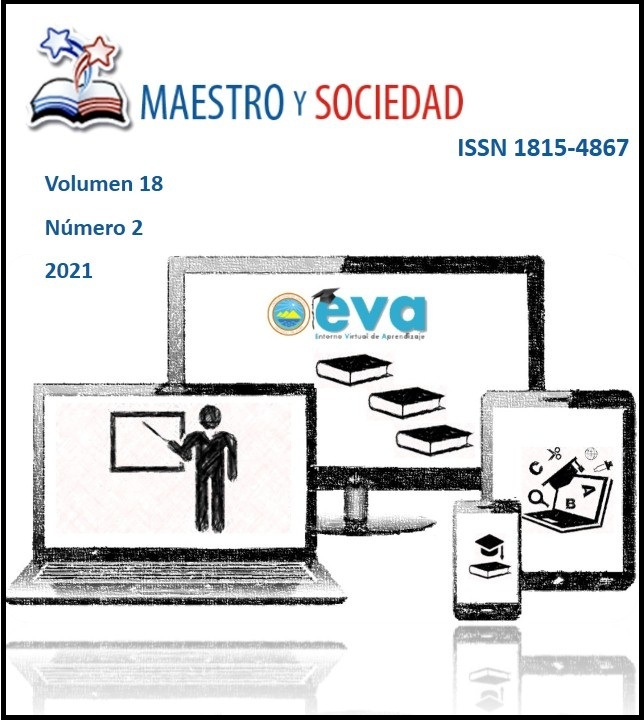The culture of prevention and its dimensions in the university community
Array
Keywords:
culture of prevention, risk behavior, quality of life, substantive processes, and system of actionsAbstract
Treating the culture of prevention from the educational process is to single it out as an educational nexus of exceptional dimensions; Therefore, it is to project it on the basis of orientation and improvement in the various areas of knowledge, in the development of skills and values; and, therefore, the substantive processes - academic, investigative, extensionist - that dynamize and expand the socio-educational process of the students are involved. Therefore, the work sets the following objective: To interpret the need to link the culture of prevention with the educational teaching process through a System of Actions. In the development of the investigation, the analysis-synthesis and system approach methods were weighted; In addition, observation and research techniques were taken into account. On the other hand, the integration of the different social, academic, research, sports and cultural impact tasks was verified. This integration is the result of research.
References
2. Álvarez, R., Pedraza, L. y Molerio, O. (2011). Programa psicoeducativo para la prevención del tabaquismo en estudiantes universitarios. (Tesis de pregrado). Universidad Central “Marta Abreu” de Las Villas, Santa Clara, Cuba.
3. Betancourt Pulsan, A, Terrado Quevedo, S. P., García Collado, M., Viel Reyes, H. y Romero Barrientos, C. (2020). Cátedra Prevención de Drogodependencia de Universidad de Ciencias Médicas Guantánamo: 15 años de experiencia. Recuperado de http://www.revinfcientifica.sld.cu/index.php/ric/article/view/131/1431.
4. Bolet, M. y Socarrás, M. M. (2003). El alcoholismo, consecuencias y prevención. Revista Cubana de Investigaciones Biomed, 22(1). Recuperado de http://bvs.sld.cu/revistas/ibi/vol22_1_03/ibi04103.htm
5. Delia Gutiérrez, D. (2009). El taller como estrategia didáctica. Recuperado de https://www.redalyc.org/pdf/1995/199520908023.pdf.
6. Domínguez, L. (2003). Valores y drogas. [Cd-Rom]. Universidad 2004.
7. Fabré-Machado, I., Riera-Vázquez, C. M. y Galindo-Delgado, S. M. (2020). Prevención social y ética en la formación universitaria cubana. Revista Maestro y Sociedad, 17(3), 372-384. Recuperado de http://maestroysociedad.uo.edu.cu
8. González, R. (2006). Cómo enfrentar el peligro de las drogas. La Habana: Editorial Política.
9. González, R. (2007). Significación médico social y ético-humanística de las drogas. Revista Cubana de Salud Pública, 33(1), Recuperado de http://scielo.sld.cu/scielo.php?pid=S0864-34662007000100002&script=sci_arttext
10. Ministerio de Educación Superior. (2000). Plan de acciones para la prevención y enfrentamiento al uso indebido de drogas. La Habana: MES.
11. Ministerio de Educación Superior. (2014). Programa Nacional de prevención del uso indebido de drogas. República de Cuba. 2014-2018. (soporte digital).
12. Ministerio de Salud Pública. (2010). Programa Nacional de control del tabaquismo en la República de Cuba. La Habana: MINSAP.
13. Sanz, A., et al. (2004). Prevención de la A a la Z. Glosario sobre prevención del abuso de drogas, CEPS: Madrid.
14. Sotolongo Acosta, M. M., Fernández Bereau, V. B. y Batista Mainegra, B. (2020). Evitar las drogas desde el contexto universitario. Recuperado de https://rus.ucf.edu.cu/index.php/rus/article/view/1577/1586.
15. Universidad de Oriente. (2014). Estrategia de Prevención y Enfrentamiento al Uso Indebido de Drogas. Periodo del 2014-2018. (material en soporte electrónico).
Published
How to Cite
Issue
Section
License
This journal provides immediate open access to its content, based on the principle that offering the public free access to research helps a greater global exchange of knowledge. Each author is responsible for the content of each of their articles.



























 Universidad de Oriente
Universidad de Oriente 